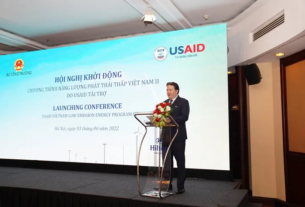
Villagers stage a protest at the construction site of a gas separation plant in Chana district, Songkhla province on Sept 26, 2004. (Post file photo)
The Supreme Court ruling on Wednesday recognising community rights to protest against a Thai-Malaysian gas pipeline project in Chana district has inspired locals in neighbouring Thepha district to fight against other projects.
The decision provides justification for Thepha district residents to further question a coal-fired power project in their community as they commemorate the first year of their opposition, Isdareh Hayedea, 57, deputy mayor of tambon Tepha municipality, said.
The ruling, read out in Songkhla’s top court, also upheld the acquittals of 32 defendants, including activists, researchers, and villagers, on riot charges following a protest against the Thai-Malaysian gas project in Chana district 13 years ago.
Mr Isdareh said it would embolden protesters to speak out further against the 2,000-megawatt coal-fired power plant of the Electricity Generating Authority of Thailand (Egat) which plans to go ahead with the project along a Thepha beach.
The project also includes construction of a nearby deep-sea port to import coal from Indonesia and South Africa.
Mr Isdareh was among a dozen people from Tepha district who attended the reading of the ruling for the marathon lawsuit.
Direk Hemnakorn, a Thepha core environmental leader, said dense haze from Indonesian forest fires this past week or so which has caused the worst pollution levels in southern Thailand in a decade should be a wake-up call for the government to care more for people in pollution-vulnerable areas too.
“Now more households understand how vulnerable Thepha is to toxic waste and smoke,” Mr Direk said.
“If they think the haze from afar has caused suffering, the dangerous smoke from a coal-fired plant in their backyard will be even worse.”
Thepha villagers also feel disappointed that the military government has not recognised their concerns about the environmental impact of the planned power plant.
Two months ago, the third public hearing was staged under strict orders by Songkhla governor Thamrong Charoenkul, which saw the deployment of 1,500 soldiers and police, along with a razor wire barrier to block opposing villagers from getting inside the hearing.
Only 60 registered people, mostly power plant supporters, were allowed into the hearing.
Weerachai Yodpetch, the head of Egat’s Thepa power plant project, said protesters have a right to protest but should tell the truth about clean coal technology too.
At public hearings over the past two years, protesters never attended forums Egat set up for the public, he said.
“We invited them but they declined and tried to set up street demonstrations,” Mr Weerachai said.
Protesters always refer to the accident that caused illnesses within the local community near the Mae Moh coal-fired power plant in Lampang in 1992 before desulphurisation units were installed, he claimed.
“Now, air in that area is already clean,” Mr Weerachai said.
He said Egat was still trying to make residents understand clean coal technology because this power plant would use “ultra super-critical technology”.
Mr Weerachai said Egat has finished an Environmental Health Impact Assessment (EHIA) report on the Thepha power plant and was waiting for approval from the Office of Natural Resources and Environmental Policy and Planning.
Construction of the first unit is scheduled to begin in 2017 with commercial operations due in 2021. The second unit will begin in 2020 and start up in 2024.
Mr Weerachai said power supply in southern Thailand is a crucial issue as it depends heavily on gas for more than 80% of total power generation.
But project opponents said there are a lot of flaws in the EHIA process and content.
“They said [in the assessment] the beach here is not pristine, fish catches are not lucrative, [there are] less valuable sea animals, and other issues. There are many fishermen however who would say they could show you pods of dolphins every week or so,” Mr Isdareh said.
Mr Direk said: “The Tuyong canal, which is part of the planned coal residue landfill of the project, is a major habitat for small sea creatures, and helps feed mangrove stretches to southern Nong Chik district in Pattani province,” Mr Direk said.
Opposing villagers plan to organise a first-year commemoration of their struggle on Nov 1.
“It’s a pity that most local leaders listen to lopsided information and do not perform their duty in educating us or boosting our learning about the ugly aspects of coal-fired power generation,” said Charnmit Chaitem, 61, a coastal fisherman.
These leaders include village and tambon headmen, Tambon Administration Organisation executives, health and school officials, he said.
Mr Charnmit likened the public hearings jointly organised by the state enterprise and local officials to a kind of bribery.
“They distributed eyeglasses, hiyabs and robes [for Muslim people], packs of rice, and other things to those who signed their approval,” he said.
“On the day the governor barred us — who were wearing ‘No-Coal’ T-shirts — he allowed other villagers wearing ‘Support-Coal’ T-shirts to attend,” he said.
Doloh Leecharoen, 56, said even though the power plant was not yet built, preparation for the port construction had already started.
“Map Ta Phut residents in Rayong will not make a decent living after the power plant is built,” Mr Charnmit said.
Source: http://www.bangkokpost.com/news/special-reports/741472/chana-riot-ruling-to-spur-activists


